From Lima with love: Peruvian food hits Melbourne with a bang
The astronomical rise of gastronomical Peru has hit Melbourne.
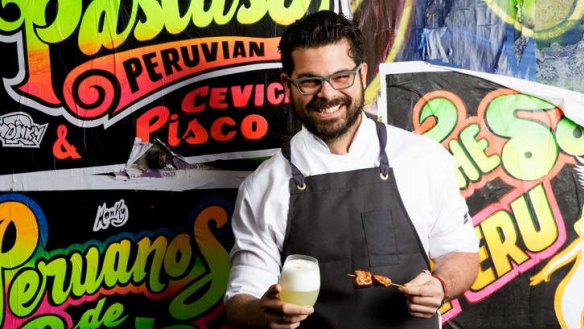
"Peruvian food" and "next big thing" go together like car horns and hook turns. But the Peruvian prophecy has mostly been background noise, so busy have we been jostling with tacos and tequila, beers and parrilla grills. Then – bam! – here it is, busting out of the milieu, pouring bright pisco sours, and plating lively ceviche and winning beef hearts. Peruvian food: you've got our attention.
"It's such pretty food," says Shaun Burke, co-owner of modern Peruvian restaurant Piqueos, one of a flourish of Peruvian restaurants to open in Melbourne recently. Joining Piqueos and Nobu (famous for its Nikkei, Japanese-Peruvian fusion) this year were an Italian-Peruvian restaurant in Ivanhoe (which has sadly just shut), a traditional home-style Peruvian place, a city bar offering Peruvian food (including Chifa, Chinese-Peruvian fusion) and the massive, million-dollar modern Peruvian ceviche bar and grill, Pastuso.
"Peruvian food has many different influences," says Pastuso's Peruvian-born chef Alejandro Saravia. "Many cultures merged in Peru, including Spanish, Japanese, Chinese and African. They adapted their cuisines with Peru's produce and cooking practices. Peru also has three very different regions: the jungle, the mountains and the coast."
Mega-diverse is a term used to describe Peru. The country's drastically different ecosystems produce a rousing array of ingredients; it boasts more than 3000 varieties of potato. The nutrient-rich ocean along its north coast is one of the world's most prodigious producers of seafood. In the Andean highlands, quinoa, potatoes and meat (largely cuy, which we call guinea pig) prevail. And the Amazon jungle is just bursting with tropical spoils. Add to that seams of influences from history's waves of migration that include Spanish, African, Italian, Japanese and Chinese to a traditional Inca and pre-Inca base, and you get fireworks.
"Melbourne is a city that is willing to try new things," says Saravia. It's also a city steeped in South American and Mexican food options, and hungry for the next area of specialisation. "Australians are familiar with Mexican-style ceviche where the seafood is marinated for a long time, sometimes overnight," says Saravia. "Peruvian ceviche is tossed just before serving; it's quite raw." Ceviche is raw fish tossed with chilli, lime and coriander traditionally served with a piece of sweet potato. It tastes like summer. In Peru, it's common to drink the leftover citrus marinade known as leche de tigre (tiger's milk). It's supposedly a hangover cure, so, go ahead, order another pisco sour.
The pisco sour is Peru's national drink, with its own official holiday: National Pisco Sour Day (the first Saturday in February). It's a bright, refreshing and sneaky cocktail of pisco (grape brandy), lime juice, sugar syrup and egg white that's shaken, and finished with a splosh of bitters.
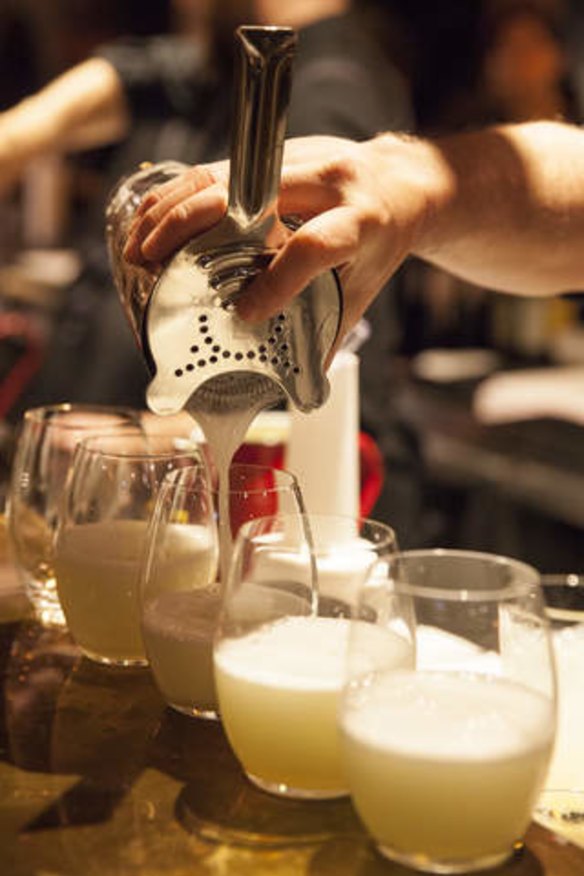
The Peruvian practice of cooking with fire is akin to Australians' relationship with the barbecue. Peruvian meats are typically marinated, then smoked, rotisserie cooked (as with Peru's world-famous smoky, salty skinned roast chook), or char-grilled. Anticuchos are skewers of grilled meat, traditionally made with beef heart. They're on Melbourne's Peruvian restaurant menus and they're the bomb: finely textured and charry. At Pastuso, you'll also find grilled alpaca shortribs with a savoury chocolate sauce. It's lean and mild, and, perhaps surprisingly, popular for something we more often associate with wool and eyelashes: "We sell 75 kilograms a week," says Saravia, who has been working with a farm in Berry, NSW, to develop a supply. Australian laws prevent Andean Peru's other staple meat, guinea pig, from being commercially farmed for food.
Other key ingredients used locally are a variety of aji (chilli peppers) that add a distinctive layer of flavour to dishes, like the fruity medium-hot aji amarillo, the smoky, lingering heat of aji panca, and searing hot rocoto. Potatoes of all kinds are incorporated into many dishes, from croquette-like starters and cassava chips through to dessert, as in crisp-fried picarones (sweet-potato doughnuts). Quinoa infiltrated Melbourne menus long ago; it's another Peruvian staple, often served here as part of a substantial grain-based side tossed with vegetables. You'll also find tropical fruits, like plantain and lucuma-flavoured ice-cream. But Peruvian food is about more than flavour and ingredients. "It has a real sense of purpose," says Burke from Piqueos. "It's conquering the world."
Just 10 years ago, Peruvian food didn't exist outside Peru. Even within Peru, eating out was more about commerce – exchanging goods for money – than cultural currency. Peruvian food has become a national symbol of pride that's fast-tracked to iconic status, and it's largely credited to one man, Gaston Arcurio.
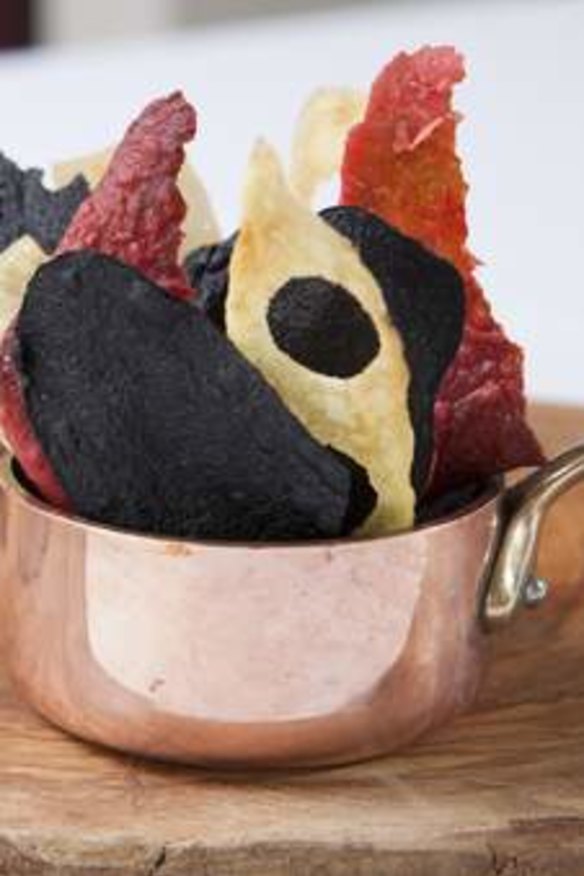
There are two distinct periods in Peruvian cuisine: BG (Before Gaston), and AG (After Gaston). The world-renowned Le Cordon Bleu-trained chef started Peru's gastronomic revolution, not with food but with words. By writing food reviews for Lima's newspapers he created interest in local food, which soon swelled to national pride. After sparking a scene within Peru, he took Peruvian cuisine to the world. Arcurio's food empire now includes restaurants in a dozen countries, cookbooks, TV shows, a cooking school for underprivileged youth, festivals and films (with Ferran Adria). Arcurio is so popular that many Peruvians want him as president.
His signature restaurant in Lima, Astrid y Gaston (ranked 18 in the 50 World's Best Restaurants), recently expanded to become a mega-restaurant with on-site botanic garden and test kitchen offering tavern-type dining, an exclusive build-your-own menu option, and 27-course degustation.
"At the moment our degustation menu is called Memories of My Country," says Astrid y Gaston head chef Diego Munoz Velasquez. "It tells the story of our childhood, lost flavours, preparations, lost produce or old emotions," he says. This kind of internal inquiry is key to Peru's gastronomic evolution, which, Munoz says, "integrates producers, chefs, tradition and modern cuisine".
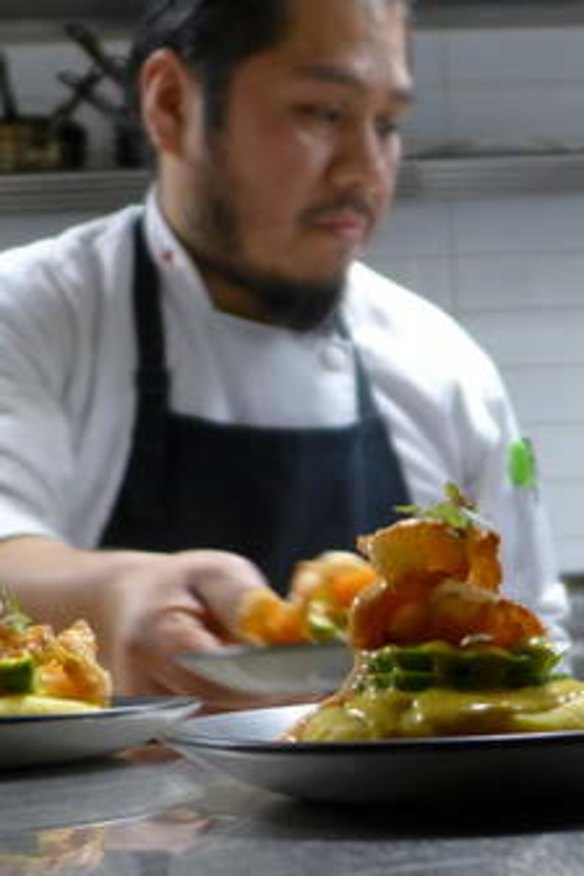
Virgilio Martinez, former chef at Astrid y Gaston (Madrid and Colombia) and owner of Lima's Central restaurant (which won the San Pellegrino Best Restaurant in Latin America last week and is ranked 15 in the World's 50 Best) also "seeks to transcend the strictly culinary, and penetrate nutritional, biological and anthropological aspects". His contemporary menus, kitchen gardens and involvement in projects like Mater Iniciativa, in which he and other professionals find and catalogue Peruvian ingredients, are the ultimate interpretation of old and new Peru.
As Peruvian cuisine continues to develop in Peru, here in Melbourne the word is spreading, and more ingredients are surfacing and being incorporated into general contemporary menus. At the local cafe you might find modern mash-ups like a Peruvian pork roll of roasted pork belly with sweet potato, salsa and aji amarillo sauce in a challah bun. Any bar with booze will have a bottle of pisco, and quinoa is so familiar that nobody calls it "kinoah" any more. Peruvian food is a thing, and it's getting bigger by the minute.
WHERE TO EAT
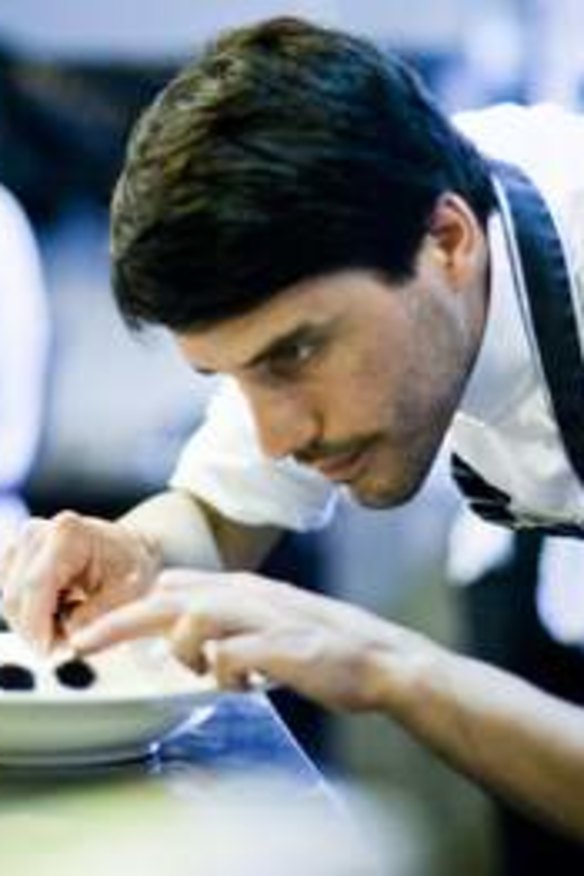
Pastuso
Pastuso offers the tastes of Peru, with all the good things about modern Melbourne: laneway locale, share-plate format, kitchen theatre and cool comfort. Pastuso has various seating options that include three bars to watch what's made: one for drinks, one for ceviche and one for the main grill/spit and smoke-focused kitchen. Chef Alejandro Saravia says Pastuso's modern Peruvian menu is about "respecting the root and essence of Peruvian cuisine, but utilising European techniques and modern presentation." Share one of seven types of ceviche, street-food specialties and something from the grill.
19 ACDC Lane, Melbourne, 9662 4556, pastuso.com.au
Piqueos
Opened in December 2012 (one of the first Peruvian menus in Melbourne), Piqueos combines all the prettiness of Peruvian food with all the grunt of the Argentine parrilla grill. It's a handsome 45-seater space with a well-proportioned menu that's segmented into "piqueos" (bites), raciones and meats from the grill. "About 50 per cent of the menu is Peruvian-based," says co-owner Shaun Burke. "As the weather warms up, it will lean to the lighter, seafood side."
298 Rathdowne Street, Carlton North, 9349 2777, piqueos.com.au
Nobu
Celebrity chef Nobu Matsuhisa's modern Nikkei (Japanese-Peruvian fusion) restaurant came to Melbourne back in 2007. It fuses imported ingredients from Peru (such as aji panca, red chilli paste) and Japan (such as yuzu) with local seafood, wagyu and veg. Chef Chris Shane Chan Yai Ching says of Nobu's cuisine: "[It] takes Nikkei cuisine to the next level, with dishes like wagyu anticuchos and scallop tiradito." Both are traditional Peruvian dishes, made with top ingredients.
Riverside, Crown Complex, Southbank, 9292 7879, noburestaurants.com
La Chinesca
It launched in 2014 as a Mexican-Chinese bar, with a Peruvian chef, Daniel Salcedo, who created the menu at Piqueos and is currently in Peru snooping for ingredients to import "to increase the quality and quantity of the traditional dishes we do here," says La Chinesca's owner Dave Mills. La Chinesca already does some Peruvian bar food, including ceviche and lomo saltado – a traditional chifa (Chinese-Peruvian) dish of beef stir-fried with soy sauce, aji amarillo, potato and spring onion. It's getting set to re-launch its menu (in October) with more of a Peruvian bent.
71 Collins Street, Melbourne, 9663 8333, lachinesca.com.au
Mi Peru Di Carmen
This little restaurant in Melbourne's south-east serves home-style, traditional Peruvian entrees such as papa huancaina, sliced potatoes doused in a humming-hot creamy sauce topped with boiled egg. There are hulking mains: giant platters of lip-pursingly tart ceviche; and coriander rice with roast chicken pieces. Desserts include lucuma ice-cream and suspiro a la limena (vanilla custard with caramel and meringue), and, while we're talking about sweets, they have tooth-achingly sweet Inca Kola.
242-246 Como Parade West, Parkdale, 9587 8002
WHERE TO BUY INGREDIENTS
For chillies, quinoa and choclo (oversized corn that's chewy and starchy), go to Casa Iberica (25 Johnston Street, Fitzroy casaibericadeli.com.au), which also stocks chicha morada (purple corn powder). King & Godfree (293 Lygon Street, Carlton kingandgodfree.com.au) sells a small range of pisco, including one Peruvian, and you can pick up cassava (frozen) at most Asian grocers.
Alejandro Saravia's Peruvian snapper ceviche
"Ceviche" (pronounced "seh-VEE-chay") is the perfect introduction to Peruvian gastronomy.
Behind every ceviche are many myths and stories. The first legend is about its creation. We know that Peruvians used to eat raw fish – for the pre-Incan culture, raw fish was part of the diet, seasoned with sea salt and aji (Peruvian chilli).
Sour oranges or other sour fruits were used to gently "cook" the fish. The Spanish contribution to the dish is the lime; at that time the first written recipe of a ceviche was created.
The origins of the name tells another myth. It says that the name was created from the Arabic word "cebo", which means "small piece of food".
800g snapper
Ceviche marinade
½ eschalot
¼ cup fish offcuts
3 coriander roots
2 tsp aji amarillo (Peruvian yellow chilli paste)
⅓ cup fish stock
salt
½ cup lime juice
1 cup lemon juice
Garnish
1 medium sweet potato, sliced
1 cup orange juice
1 cinnamon quill
2 whole cloves
100g raw sugar
1. Clean the snapper fillets and cut into small dice (1cm x 1cm), cover and reserve in the fridge.
2. For the marinade, blend the eschalots, fish offcuts, coriander root and the Peruvian chilli paste with the fish stock. Add salt to season if needed. Add the lime and lemon juice, stir, then set aside in the refrigerator.
3. For the garnish, cut the sweet potato into 1 cm slices and put into a saucepan. Add orange juice, cinnamon, cloves, raw sugar and enough water to cover the sweet potato. Cook until tender. Remove from heat and drain.
4. To finish, place the fish into a bowl, add the “leche de tigre” marinade and toss. Serve over the sliced sweet potato.
Restaurant reviews, news and the hottest openings served to your inbox.
Sign up